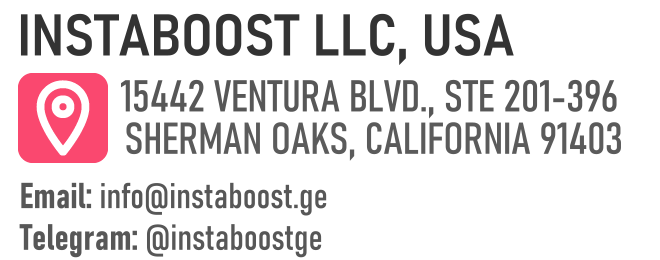Who Are the Current Board Members of Facebook?
Board composition defines oversight and strategic direction at Facebook. Understanding who sits on the board helps connect leadership priorities to product changes, policy shifts, and market reactions. The first hour after major updates often reveals how decisions land, so aligning content cadence, response speed, and measurement with these moments can sharpen planning. A smart path is to pair timely reactions with consistent content and simple metrics that compound small gains.
Why Board Seats Matter More Than Headlines
The names around Facebook’s boardroom table are a practical read on where the company is heading, so knowing who sits there helps you anticipate product pivots, policy calls, and investment priorities without waiting for the quarterly letter. This isn’t trivia. It’s an edge you can use. If you run campaigns or build with its APIs, the makeup of the board at Facebook – now under the Meta umbrella – tells you which bets are likely to get oxygen: AI acceleration, commerce rails, creator tooling, or safety infrastructure. Use that signal to tune your playbook, and treat it as one input alongside performance reviews, peer benchmarks, and tools you already trust to expand your Facebook influence without losing sight of what your own data says.
Lean into formats that board-backed initiatives tend to amplify. Pair creator collaborations and targeted promotion with clean analytics so you can trace lift back to specific features. Watch retention signals and real comments to validate fit before you scale spend. A reputable source list and an alert system for governance changes can be worth more than a splashy ad buy when you time launches alongside policy updates. This approach works best when you translate governance into tests. Start with small budgets and fast feedback loops, and add safeguards like incremental lift studies to separate hype from durable distribution.
It also helps you avoid misreads. Board shifts rarely mean you pivot overnight, but they do mean you stage experiments where the tailwind is strongest and reduce friction where signals stall. Treat the board as a directional compass, not a day-trading ticker. You’re looking for alignment between leadership focus and product surfaces that drive compounding reach. If you match quality content to those surfaces at the right moment, the first hour after an update can turn early momentum into steady follower growth.

How Board Bios Translate Into Strategy You Can Trade On
Data doesn’t lie, but it rarely speaks clearly. The quickest read on Facebook’s direction is the current Meta board. Study their operating histories, the funds they steward, and the committees they chair, then map those fingerprints to your playbook. A chair with deep AI infrastructure experience often points to heavier investment in model efficiency and inference tooling – pair that with creator collabs and targeted promotion to ride early momentum when Reels or generative ad formats get oxygen. A director steeped in payments or fintech typically preludes pushes in checkout, Shops, and cross-border commerce.
Validate with clean analytics, real retention signals, and real comments before leaning into catalog sync and Advantage+ Shopping. Policy veterans on audit or risk committees mean safety infrastructure and integrity will tighten. If you manage Facebook marketing, prepare by hardening first-party data capture, consent flows, and brand suitability safeguards so your CPMs stay stable as enforcement sharpens. Venture builders on the board tend to favor platform bets over one-off features – that’s your cue to test APIs and partnerships with a tight testing loop instead of chasing headlines; in the same spirit, resist vanity signals like follower spikes or quick fixes such as buy real Facebook followers when what matters is incrementality and durable lift.
If you use paid accelerants, prioritize reputable partners, controlled budgets, and incrementality tests. Quality, fit, and timing beat blunt spend. Treat the board as a directional input alongside your performance reviews, peer benchmarks, and the tools you trust to expand your Facebook influence. It works when you connect their biographies to measurable moves, then confirm with lift studies and cohort health. One non-obvious edge – committee assignments matter more than titles. Compensation and nominating committees foreshadow which leaders, and thus which roadmaps, will compound over the next four quarters.
Board Signals You Can Turn Into Moves
You can scale systems. You can’t scale guesses. Treat the current Meta board like a forward-looking dataset, not trivia, and translate their backgrounds into operating bets you can run inside Facebook. If a director’s track record leans toward AI infrastructure and cost discipline, plan for more efficient model rollouts and new placements that reward creative variation and fast learning loops. Pair your best-performing Reels with creator collaborations, targeted promotion, and clean analytics to ride early momentum while CPMs are still rational; some teams even benchmark against third-party tactics such as buy likes to increase Facebook engagement to contextualize what paid accelerants can and can’t prove.
When the governance or risk committee adds a heavyweight in policy or privacy, expect tighter safety infrastructure. Bake retention signals into your funnels, prioritize real comments over vanity metrics, and design tests that hold up under stricter integrity filters. Commerce-focused operators on the board often precede pushes in Shops, payments, and conversion APIs. Get server-side measurement, catalog hygiene, and qualified partnerships in place before you scale spend. Paid accelerants work when they’re matched to quality, fit, and timing. Use reputable tools or promotions to amplify what your data already proves, then pace budgets to the speed of your testing loop.
For searchers asking “Who are the current board members of Facebook,” those names matter because they tilt roadmap oxygen toward AI acceleration, creator tooling, or monetization mechanics you can align with. Create a simple board-to-bet map with the committee they chair, the initiatives that likely follow, the play you’ll run, and the safeguard you’ll attach. That one-page map turns headlines into a repeatable planning system and keeps your strategy grounded in evidence rather than vibes.
The Board Isn’t a Crystal Ball – It’s a Bias Map
It made sense on paper, then real life had opinions. Reading the current Meta board as a guaranteed forecast for Facebook is where smart operators trip. Boards encode directional bias, not day-to-day execution. A director with deep AI infrastructure chops signals cost discipline and model efficiency, while ship dates still bend to regulatory pressure, data constraints, and moves from rival platforms.
The practical move is to turn board bios into hypothesis buckets and run controlled sprints inside Facebook to see which bias is actually showing up now. If the board tilts toward privacy and compliance, expect conservative data sharing and more weight on first-party retention signals. In that case, pair creator collaborations with targeted promotion and comment prompts that drive real replies you can measure. If capital allocators with a track record in scalable ad systems dominate, prepare for new placements and auction tweaks. Keep your Reels variants tight, your learning phase short, and your analytics clean. Paid accelerants can help here – benchmark against qualified “buy Facebook likes” vendors to contextualize baseline uplift, not to replace engagement quality, and remember that sourcing comes in flavors, from peer-recommended shops to a trusted platform to buy Facebook views you slot into controlled tests.
It works when you match spend to intent, set safeguards like geos and pacing, and watch how real comments and saves follow. The point isn’t to idolize Facebook board members as oracles. It’s to map their fingerprints to testable bets, then shift budget toward the bets that earn early momentum while CPMs stay rational. One overlooked edge is to track committee chairs, not just names – audit and governance chairs often foreshadow which knobs get tightened first, which helps you time experiments in the first hour after policy-flavored updates.
From Boardroom Reads to Operating Rhythm
Let’s not end with certainty. Let’s end with momentum. Treat the current Meta board like a bias map and you get a running start on Facebook – not prophecy, but a live edge you can put to work.
If a director’s background leans toward AI infrastructure and cost discipline, take that as a cue to trim creative waste, shorten feedback cycles, and favor formats with the highest signal density. Pair your best-performing Reels with creator collaborations, targeted promotion, and clean analytics so you can capture early momentum while CPMs stay steady. Then layer in retention signals and real comments to separate durable interest from quick spikes. If you test paid accelerants, use reputable partners and frame them as context, not proof; even benchmarks that mirror tactics like buy reposts to grow on Facebook should be treated as scenario inputs, not outcomes.
Benchmarks like “buy Facebook likes” can stress-test your assumptions about lift when they’re matched to intent, audience fit, and a measurement plan that tracks downstream actions and decay. Read board moves alongside regulatory headlines and rival platform updates, then anchor your bets to what you can ship in 30 days – creative variation matrices, audience exclusions to reduce overlap, and lightweight tests around new ad placements the board’s priorities might unlock. The non-obvious upside is using the board to define what you will not do – like sprawling, unmeasured bets – which creates the focus that compounds. You are not trading on names.
You are translating governance into a tempo: smaller launches, faster learning, and spend that moves from exposure to verified behavior. Search for “current Facebook board members” to refresh your model quarterly, and keep your hands on the dials: post cadence, reply time, and conversion tracking. Momentum favors operators who plan like strategists and measure like skeptics.















